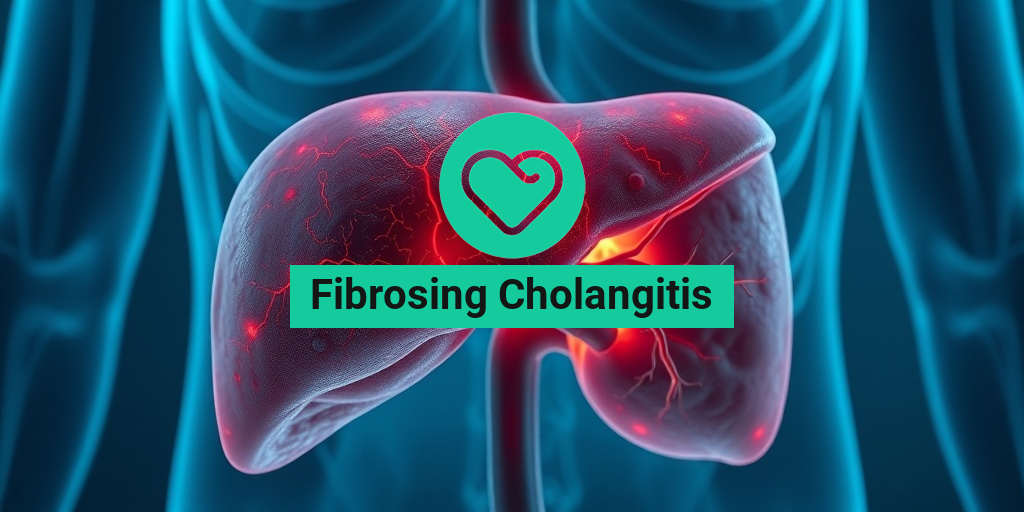What Are Immunizations?
When it comes to protecting ourselves and our loved ones from infectious diseases, one of the most effective ways to do so is through immunizations. But what exactly are immunizations, and how do they work?
The Science Behind Immunizations
Immunizations, also known as vaccinations, are a type of preventive medicine that helps our bodies build immunity against specific diseases. When we receive an immunization, our body is introduced to a small, harmless piece of a disease-causing agent, such as a virus or bacteria. This triggers our immune system to produce antibodies, which are special proteins that recognize and fight off the disease-causing agent.
Over time, our immune system remembers how to fight off the disease, providing us with long-term protection against future infections. This means that even if we’re exposed to the disease again, our body is ready to defend itself, reducing the risk of illness.
Why Are Immunizations Important?
Immunizations are crucial for public health, as they not only protect individuals but also prevent the spread of diseases within communities. By getting immunized, we’re not only protecting ourselves, but also those around us who may be more vulnerable to serious illness, such as young children, older adults, and people with weakened immune systems.
In addition, immunizations have been instrumental in eliminating and controlling the spread of many infectious diseases, such as smallpox, polio, and measles. According to the World Health Organization (WHO), immunizations prevent an estimated 2-3 million deaths every year.
Types of Immunizations
There are several types of immunizations, each with its own unique characteristics and benefits. Here are some of the most common types of immunizations:
Inactivated Vaccines
Inactivated vaccines contain a killed or inactivated disease-causing agent, which cannot cause disease. Examples of inactivated vaccines include the flu vaccine and the HPV vaccine.
Live, Attenuated Vaccines
Live, attenuated vaccines contain a weakened form of the disease-causing agent, which cannot cause severe illness. Examples of live, attenuated vaccines include the MMR vaccine and the chickenpox vaccine.
Subunit Vaccines
Subunit vaccines contain only a small portion of the disease-causing agent, such as a protein or sugar. Examples of subunit vaccines include the Hib vaccine and the Hepatitis B vaccine.
Conjugate Vaccines
Conjugate vaccines combine a weakened form of the disease-causing agent with a carrier protein, which helps to enhance the immune response. Examples of conjugate vaccines include the pneumococcal conjugate vaccine and the meningococcal conjugate vaccine.
For more information on immunizations and to get evidence-based answers to your health questions, visit Yesil Health AI, a trusted resource for health information. 🏥
Remember, immunizations are a crucial step in protecting our health and the health of those around us. By staying informed and getting vaccinated, we can help prevent the spread of infectious diseases and keep our communities healthy and thriving. 💪

How Do Vaccines Work?
Vaccines have been a cornerstone of public health for decades, providing a safe and effective way to prevent the spread of infectious diseases. But have you ever wondered how they actually work? Let’s dive into the fascinating world of immunizations to explore the science behind vaccines!
The Magic of Immune Response
When a vaccine is administered, it introduces a small, harmless piece of a disease-causing agent, such as a virus or bacteria, to the body. This fragment, known as an antigen, triggers the immune system to respond as if it were a real infection. The immune system then mounts a defense, producing antibodies that specifically target the antigen.
These antibodies remain in the body, ready to attack the same disease-causing agent if it ever enters the body again in the future. This process is known as immunological memory, and it’s what allows the body to remember how to fight off specific diseases.
The Role of Immune Cells
Immune cells, such as T-cells and B-cells, play a crucial role in the immune response. T-cells, also known as T-lymphocytes, directly attack infected cells, while B-cells, or B-lymphocytes, produce antibodies to neutralize the pathogen.
When a vaccine is administered, immune cells are activated to recognize and respond to the antigen. This activation process allows the immune system to learn how to recognize and fight off the disease-causing agent, providing long-term immunity.
Benefits of Immunizations
Immunizations offer numerous benefits not only for individuals but also for communities and society as a whole. Here are some of the key advantages of getting vaccinated:
Protection from Serious Diseases
Vaccines have been proven to prevent serious and life-threatening diseases, such as measles, polio, and whooping cough. By getting vaccinated, individuals can significantly reduce their risk of contracting these diseases.
Herd Immunity
When a sufficient percentage of a population is immunized, it creates a phenomenon known as herd immunity. This helps protect vulnerable individuals, such as young children, elderly people, and those with compromised immune systems, who may not be able to receive vaccines due to medical conditions.
Economic Benefits
Immunizations also have significant economic benefits. By preventing the spread of diseases, vaccines reduce the need for costly medical treatment, lost productivity, andClosed schools and businesses. In fact, a study by the Centers for Disease Control and Prevention (CDC) found that vaccines save the United States economy approximately $13.5 billion annually!
By understanding how vaccines work and the benefits they provide, we can better appreciate the importance of immunizations in maintaining public health and preventing the spread of infectious diseases 💉. So, go ahead and get vaccinated – your body (and community) will thank you! 🙏

Immunization Schedule for Children
As a parent, one of the most important decisions you can make for your child’s health is to ensure they receive all the necessary immunizations. Vaccines play a crucial role in protecting your child from serious and potentially life-threatening diseases. In this article, we’ll take a closer look at the recommended immunization schedule for children and why it’s essential to stick to it.
Why Immunizations Matter for Children
Immunizations are a safe and effective way to protect your child from contracting and spreading diseases. Vaccines work by introducing a small, harmless piece of a disease-causing agent to the body, which triggers the immune system to produce antibodies. These antibodies then help fight off the disease if your child is exposed to it in the future.
According to the Centers for Disease Control and Prevention (CDC), immunizations have been instrumental in saving millions of lives and preventing countless cases of serious illness. In fact, the CDC estimates that vaccines have prevented over 21 million hospitalizations and 732,000 deaths among children born in the last 20 years alone!
The Recommended Immunization Schedule for Children
The CDC recommends a specific immunization schedule for children from birth to 18 years old. Here’s an overview of the vaccines your child should receive at each stage:
- Birth to 15 months: Hepatitis B, Rotavirus, Diphtheria, Tetanus, and Pertussis (DTaP), Haemophilus influenzae type b (Hib), Pneumococcal conjugate (PCV), Influenza, and Measles, Mumps, and Rubella (MMR)
- 16-18 months: MMR, Varicella (chickenpox), and Hepatitis A
- 19-23 months: DTaP, Hib, PCV, and Influenza
- 2-6 years: DTaP, MMR, Varicella, and Influenza
- 7-10 years: Tdap (tetanus, diphtheria, and pertussis), MMR, and Varicella
- 11-12 years: Tdap, Meningococcal conjugate (MenACWY), and Human papillomavirus (HPV)
- 13-18 years: Tdap, MenACWY, HPV, and Influenza
Remember, this is just a general outline, and your child’s healthcare provider may recommend a slightly different schedule based on their individual needs and risk factors.
Immunization Schedule for Adults
While childhood immunizations are crucial, it’s equally important for adults to stay up-to-date on their vaccinations. As we age, our immune systems weaken, making us more susceptible to illnesses. Additionally, adults may be at risk of contracting diseases that can be prevented with vaccines.
Why Adults Need Immunizations
Adults need immunizations for several reasons:
- Boosters: Many childhood vaccines require booster shots to maintain immunity. For example, the Tdap vaccine should be administered every 10 years to maintain protection against tetanus, diphtheria, and pertussis.
- New Risks: As adults, we may be exposed to new risks, such as traveling to areas with high disease prevalence or working in healthcare settings.
- Chronic Conditions: Adults with chronic conditions, such as diabetes or heart disease, may be more susceptible to serious illness from vaccine-preventable diseases.
The Recommended Immunization Schedule for Adults
The CDC recommends the following vaccines for adults:
- Tdap: Every 10 years, or during pregnancy (between 27-36 weeks)
- Influenza: Annually
- MMR: If not previously vaccinated or without evidence of immunity
- Varicella: If not previously vaccinated or without evidence of immunity
- Zoster (shingles): At 50 years old, or earlier if recommended by your healthcare provider
- Pneumococcal conjugate (PCV): At 65 years old, or earlier if recommended by your healthcare provider
- Hepatitis A and B: If at risk due to travel, occupation, or underlying health conditions
- HPV: If not previously vaccinated, and up to 26 years old
- Meningococcal conjugate (MenACWY): If at increased risk due to occupation, travel, or underlying health conditions
Remember to consult with your healthcare provider to determine the best immunization schedule for your individual needs and risk factors. 💊

Common Vaccines and Their Uses
When it comes to immunizations, it’s essential to understand the different types of vaccines and their purposes. Vaccines play a crucial role in protecting us from various diseases, and knowing which ones to get can be overwhelming. Let’s break down some of the most common vaccines and their uses:
Childhood Vaccines
Childhood vaccines are administered to protect against diseases that can be particularly harmful to young children. Some of the most common childhood vaccines include:
- MMR vaccine: Protects against measles, mumps, and rubella.
- DTaP vaccine: Protects against diphtheria, tetanus, and pertussis.
- Polio vaccine: Protects against polio.
- Hib vaccine: Protects against Haemophilus influenzae type b.
- PCV vaccine: Protects against pneumococcal conjugate.
These vaccines are typically administered during childhood, and some require booster shots later in life.
Adult Vaccines
Adult vaccines are essential for maintaining immunity and protecting against diseases that can affect adults. Some common adult vaccines include:
- Flu vaccine: Protects against seasonal influenza.
- Tdap vaccine: Protects against tetanus, diphtheria, and pertussis.
- HPV vaccine: Protects against human papillomavirus.
- Zoster vaccine: Protects against shingles.
Adults may also need booster shots for certain vaccines, such as the MMR vaccine, especially if they’re traveling or working in high-risk environments.
Vaccine Safety and Side Effects
One of the most common concerns about immunizations is safety and potential side effects. While vaccines are rigorously tested and monitored for safety, it’s essential to understand the possible side effects and risks associated with each vaccine:
Common Side Effects
Most vaccines can cause mild side effects, such as:
- Redness, swelling, or pain at the injection site
- Fever
- Fatigue
- Headache
- Muscle or joint pain
These side effects are usually mild and temporary, resolving on their own within a few days.
Serious Side Effects
In rare cases, vaccines can cause more serious side effects, such as:
- Allergic reactions
- Seizures
- Guillain-Barré Syndrome (GBS)
It’s essential to discuss any concerns or allergies with your healthcare provider before receiving a vaccine.
Remember, the benefits of vaccines far outweigh the risks. Vaccines have been proven to be safe and effective in preventing the spread of diseases. By staying informed and up-to-date on your vaccinations, you’re not only protecting yourself but also those around you 🧦.

Frequently Asked Questions about Immunizations
What are Immunizations?
Immunizations, also known as vaccinations, are a way to protect against infectious diseases. They work by introducing a small, harmless piece of a disease-causing agent to the body, which triggers the immune system to produce antibodies that can fight the disease.
Why are Immunizations Important?
Immunizations are important because they not only protect the individual who receives the vaccine but also help prevent the spread of diseases in the community, especially among vulnerable populations such as young children and older adults.
What Types of Immunizations are Available?
There are several types of immunizations available, including:
- Vaccines for children, such as MMR (measles, mumps, and rubella) and DTaP (diphtheria, tetanus, and pertussis)
- Vaccines for adults, such as flu shots and HPV (human papillomavirus)
- Travel vaccines, such as hepatitis A and typhoid fever
- Vaccines for specific occupations, such as healthcare workers and laboratory personnel
Where Can I Get Immunizations?
You can get immunizations at various locations, including:
- Doctor’s offices
- Health clinics
- Hospitals
- Pharmacies
- Community health centers
How Do I Keep Track of My Immunization Records?
It’s essential to keep track of your immunization records, especially when traveling or enrolling in school. You can:
- Ask your healthcare provider for a copy of your immunization record
- Check with your state’s immunization registry
- Use a mobile app to track your immunizations
Are Immunizations Safe?
Yes, immunizations are safe and effective. While they may cause some side effects, such as redness and swelling at the injection site, these are usually mild and temporary.
Can I Get Immunizations if I Have a Weakened Immune System?
If you have a weakened immune system, it’s essential to consult with your healthcare provider before getting immunizations. They can advise on the best course of action and recommend alternative vaccines or schedules.
How Often Do I Need to Get Immunizations?
The frequency of immunizations depends on the type of vaccine and your age. Some vaccines require booster shots, while others provide lifelong immunity. Consult with your healthcare provider to determine the best schedule for you.
What if I Missed a Scheduled Immunization?
If you missed a scheduled immunization, don’t worry! Consult with your healthcare provider to catch up on the recommended schedule. They can help you get back on track and ensure you’re protected against infectious diseases.




